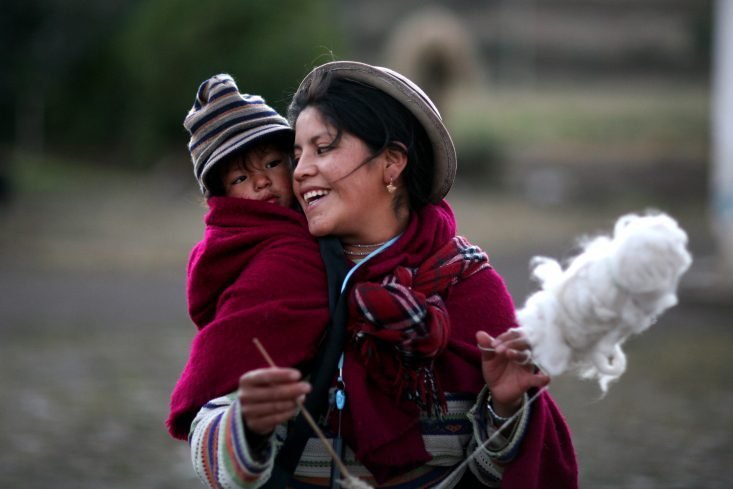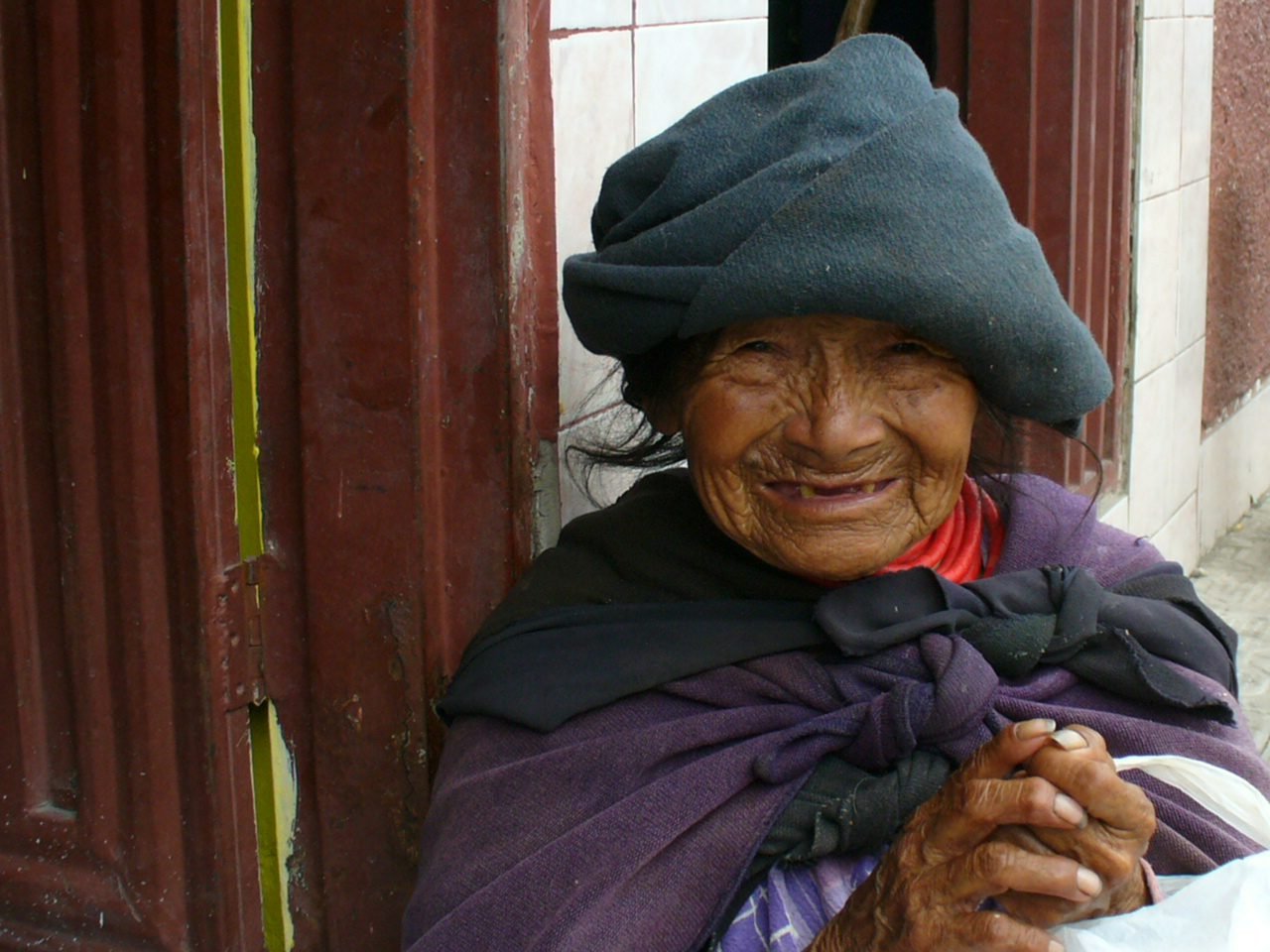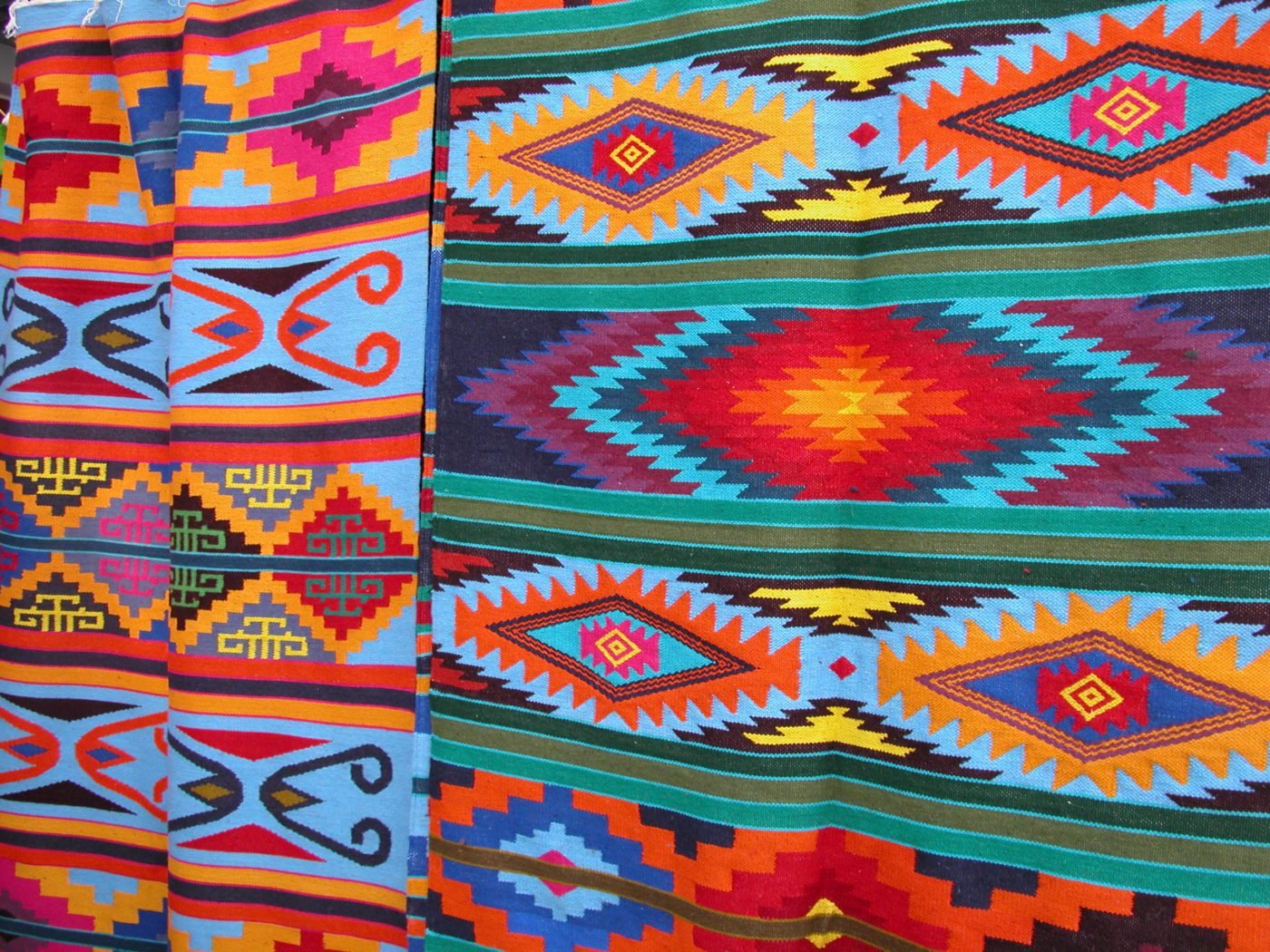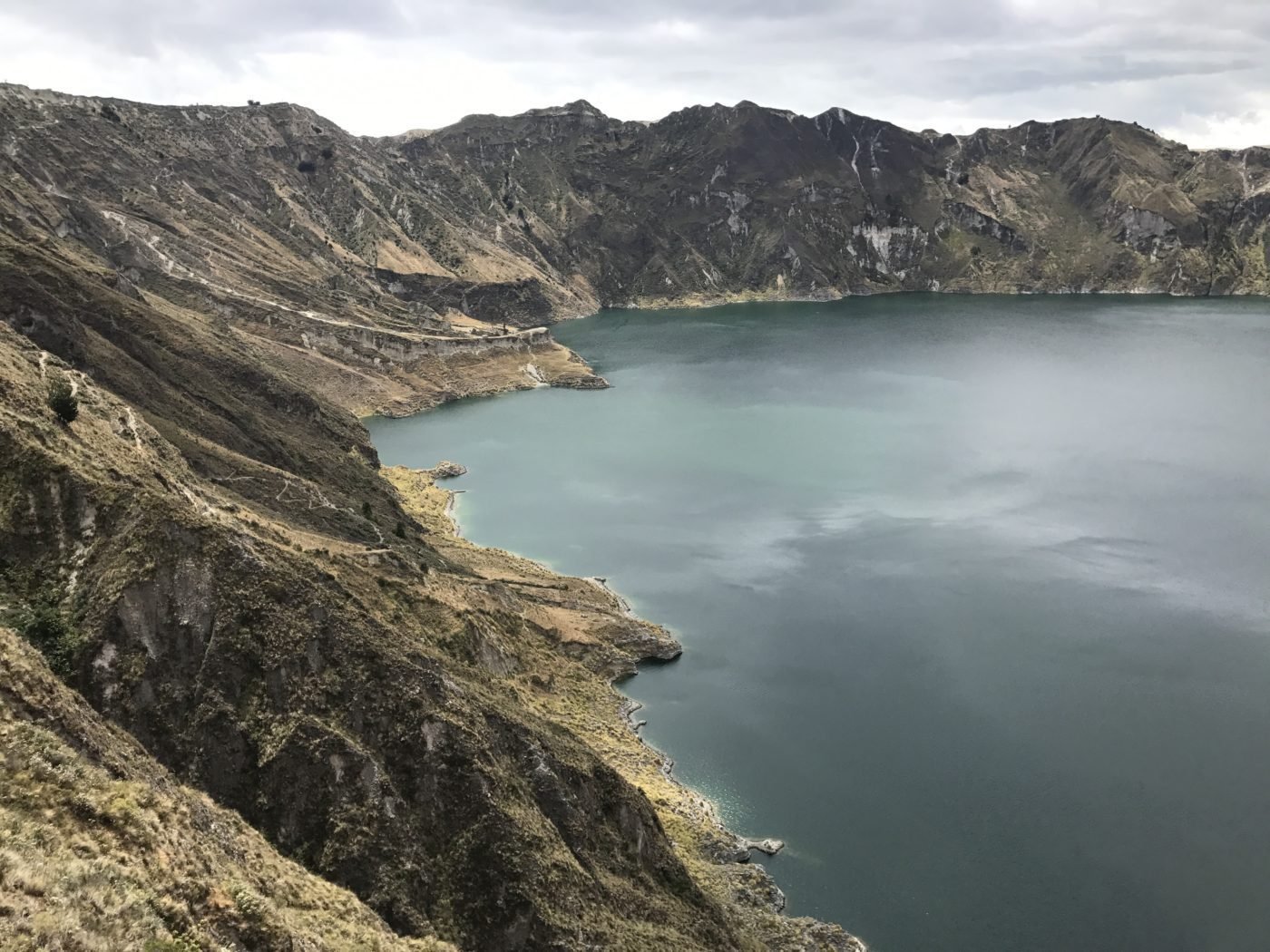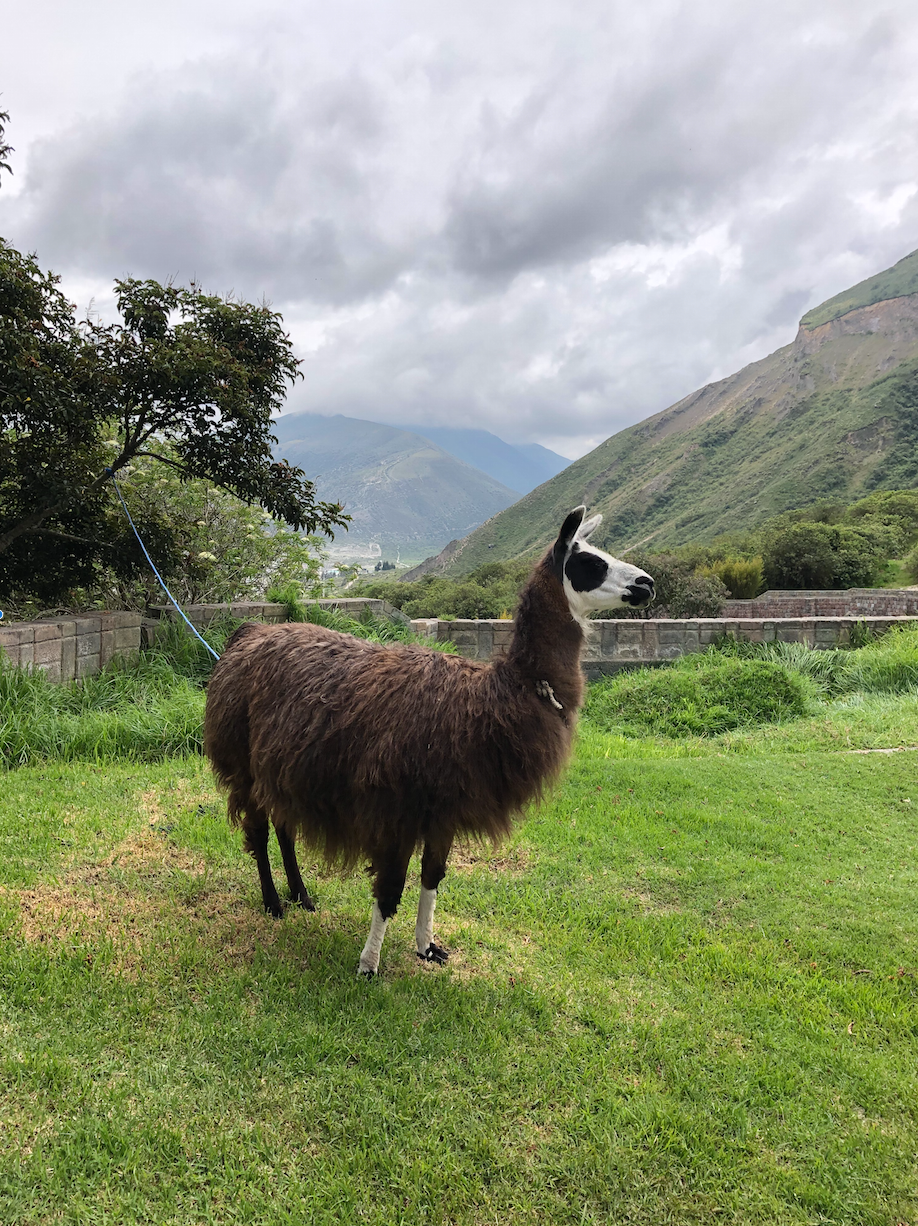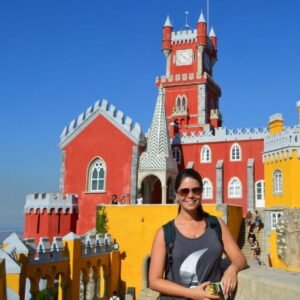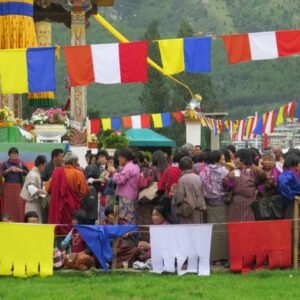HIGHLIGHTS INCLUDE:
- Visiting the colonial heart of Quito – a UNESCO World Heritage Site
- Exploring the beautiful scenery and market of Otavalo
- Riding on the Devil’s Nose Train – one of the most scenic train rides in the world
- Learning about Ecuadorian traditions and culture firsthand
- Viewing spectacular scenery along the Avenue of the Volcanoes
- Wandering around Ingapirca – Ecuador’s best preserved Incan site
DAY 1: ARRIVAL TO QUITO, ECUADOR
After the arrival at Quito’s Mariscal Sucre Airport, our helpful guide will meet you. Moreover, they will serve as a translator, and assist with the private transfer to your hotel.
Overnight: Quito
Meals: -/-/-
DAY 2: QUITO TOUR & EQUATOR VISIT
Full Day City tour in Quito & Equatorial Line
Ecuador is history, fascinating indigenous cultures, slow winding rivers and lush tropical forests, spectacular snowcapped volcanoes and some of the most exciting wildlife on earth.
The place to start is the ‘Mitad del Mundo’, a site located just 45 minutes north of Quito, where a monument marks the equator at its closest point to the city. Archaeological evidence shows that both pre-Inca and Inca civilizations recognized and celebrated the Equinox, the day the sun is directly over the equator.
In the morning we will make the 45 minute journey northwest to the equatorial line, where we will walk the rim of the extinct Pululahua volcanic crater. Later we will visit the “Ciudad Mitad del Mundo” a group of buildings designed to explain the significance of the site, as well as the Ethnographic or Initñam Museum, located right on the Equator. Here you will have the chance to plant your feet in two hemispheres at the same time!
Back in Quito, after lunch we will visit the city’s impressive colonial centre, the reason Quito was the first city to be named a world heritage site. First on the agenda is a walk through the main plaza, the ‘Plaza de la Independencia’, where you will see the Government Palace, the Cathedral, and some of the most important churches built around the XVI and XVII centuries, including the San Francisco Monastery, a building begun only 5 days after the founding of the city.
Now for our chocolate experience! Ecuador’s unique equatorial climate provides the perfect environment for growing the world’s finest cocoa – Cacao Arriba. Cocoa has been revered in Latin America for over 5,000 years. Spanish explorers loved it so much they called it the ‘Food of the Gods’.
The Republica del Cacao’s founders began their voyage over ten years ago when they set themselves an ambitious mission: to produce the most authentic and delicious chocolate, while protecting and developing sustainable fine cocoa production.
Our chocolate experience starts with a guided explaining the history of cocoa in Ecuador, followed by a chocolate tasting.
Overnight: Quito
Meals: B/-/-
DAY 3: OTAVALO MARKET AND TRADITIONAL VILLAGES
Excursion Mojanda Lakes and Cooking Class at Zuleta Community
We leave Quito early in the morning, after a hearty breakfast. The mornings are usually spectacularly clear and crisp in the high mountains and the 90 minute drive to our destination (more than 2,000 meters – 3,200 ft – above the sea level) is full of breathtaking vistas. This is a region surrounded by majestic mountain ranges only 40 miles wide, full of fertile valleys and unmatchable scenic beauty, inhabited by a kind people anxious to show you the customs and cultural heritage that make them so distinct. Our first stop is at the Quitsato Sundial, a cultural-tourist place located at La Mitad Del Mundo, near to Cayambe, where you will learn about astronomical aspects of the prehispanic cultures of the region.
Our Mountainside Lodge is located above the town of Otavalo in the foothills of Mount Mojanda. At the lodge a welcome tea and brief talk by our hosts, there your hosts will lead a brief tour of the lodge and its immediate surroundings. Then we will travel up to the Mojanda lakes, a 20 minute scenic drive from the Lodge. Here you can take a two-hour scenic hike around the lakes and their marvellous scenery or, for those feeling more athletic or interested in climbing there is the option to climb from the lakes up to Fuya Fuya (14,200 feet). This is a non-technical but steep climb. If, on the other hand, you feel more like unwinding and enjoying the view we can arrange a plan to fish, or simply relax at the lake.
Lunch – Cooking Class at Zuleta community
Lunch will be prepared in a local’s home that kindly accepted to share his home and life with us and give us a cooking class! We will be using the different ingredients we have been learning about for the past few days.
Overnight: Otavalo
Meals: B/L/D
DAY 4: OTAVALO MARKET
Excursion Otavalo Market
Afterbreakfast we will visit the town of Otavalo. This is truly one of the most interesting towns in Ecuador, where the local Kichwa indigenous culture is not only plainly visible, but in the ascendency.
The town’s famous craft market is one of the most visited sites in Ecuador, and with good reason. The market is filled with interesting colourful and sometimes rare objects and crafts. Do remember to bargain, but only if you´re interested! The market is held every day on one of the town squares at the foot of the majestic Mt. Imbabura. And to help you navigate the market, you will be given a short explanation of the market and provided with a map of the area.
As part of our day at the market we will visit the workshop of Master weaver Miguel Andrango, in the village of Agato. Miguel’s art has taken him abroad, mainly to exhibitions and fairs in the United States where the quality of his work is widely acknowledged. In the small store in the courtyard of his Tawantinsuyo workshop, the walls are covered with bright designs, most with an indigenous motif; the designs are based on Inca patterns but are the work of Miguel and his family. The workshop uses only pure wool and Alpaca; the weavers card and spin it themselves and then dye it with natural inks made from mosses (for yellow) or seeds such as ‘Achiote’(for red).
Overnight: Otavalo
Meals: B/L/D
DAY 5: OTAVALO to COTOPAXI
After breakfast you will be transferred from Otavalo to nearby Cotapaxi Volcano.
Pita River´s Waterfall
When you arrive at the Cotopaxi area we will visit the Pita River Waterfall. The hike will take around one hour and a half – round trip, and departs from the parking lot of the Municipal Water Company. The way is easy and you will explore waterfalls, bird watch, learn about plants, it´s also suitable for kids.
Hiking time: 1h30 Hours.
Difficulty: Easy
Type of terrain: Grassland / easy.
Overnight: Cotopaxi
Meals: B/L/D
DAY 6: COTOPAXI NATIONAL PARK
Excursion Cotopaxi National Park
We will visit Cotopaxi National Park where, weather permitting, you will be able to see the snowcapped summits of the Cotopaxi and Antisana volcanoes.
We will also visit the Interpretation center to learn about the history of this spectacular volcano’s major eruptions, as well as the local flora and fauna. We will then visit Lake Limpiopungo and explore the surrounding area on foot.
If you feel like a longer walk, a 2 hour hike will take us to Mt. Cotopaxi’s J. Ribas Refuge (4,800 m) where you will be able to enjoy spectacular views of the volcano and the surrounding Andean peaks.
Overnight: Cotopaxi
Meals: B/L/D
DAY 7: COTOPAXI – QUILOTOA – RIOBAMBA
Indigenous Markets and Quilotoa Lake
Today we will visit Indian market in the town of either Pujili. These markets are as authentic and non-touristic as can be found today in Ecuador today. They are important to the local indigenous people as markets are the center of their social and economic worlds.
We will then visit the Quilotoa volcano crater, where we will be able to appreciate the crater’s serenely mysterious green lake. We’ll have the option of a short walk of about 1.7 km along the crater’s rim.
On the way back, we will stop to visit the art galleries in the community of Tigua, where we will be able appreciate the paintings representative of the folklore of this special part of the Andes. The brightly coloured naïve style of the area’s painters, currently the third generation, has transcended local boundaries and is now internationally renowned.
These days there are a lot of painters in Tigua, but Julio Toaquiza was the first, and is still number one. We will visit Julio in his studio, and you will be able to see why his work is appreciated for the bright colours, the meticulous detail, and the stories his paintings tell of life in the high Andes: the volcanoes, the condors, and the indigenous communities with their legends.
Overnight: Riobamba
Meals: B/L/D
DAY 8: Devil’s Nose Train – Ingapirca – Cuenca
Devil´s Nose Train
Today is the day for our exhilarating train journey down to the ‘Devil’s Nose’, called by some the “most difficult train route in the world”. The railroad was originally built to connect the Andes with the coast, and the route climbs up steep slopes, rolls down into river valleys and negotiates a truly massive wall of rock called the ‘Nariz del Diablo’, or Devil’s Nose.
The biggest complication faced by the construction of the Trans-Andean railroad was the Devil’s Nose, a mountain with almost perpendicular walls. To overcome this obstacle a zigzag railroad was built that climbs more than 500 meters in less than 12 km with steep ascents and descents. Today it remains an impressive piece of engineering.
As part of this dramatic ride, we will take a short walk to a spectacular lookout over the mountains and the train route.
While recovering from the mind-blowing descent you will enjoy the views of the narrow gorge of river Chanchán and will have the chance to learn a bit about the traditions and worldview of the Puruhuas in Sibambe.
Excursion Ingapirca Ruins
We now drive South to Ingapirca, an Inca observatory and fortress. This is the most important Inca site in Ecuador, where the Emperor and his entourage would rest during trips to this northern segment of the Empire.
Ingapirca Ruins, is the largest and best preserved archaeological complex in Ecuador. It was built with stones perfectly carved and joined with natural mortar, this Temple served for ceremonies and rituals of the Cañari-Inca culture, also had strategic-military purposes.
Overnight: Cuenca
Meals: B/L/-
DAY 9: CUENCA – CAJAS NATIONAL PARK
Cuenca City Walking Tour
One of the first things to notice when entering Cuenca is the magnificent skyline marked by brilliant church domes. And after breakfast we will set out on a city tour whose highlight is the city’s colonial architecture.
Cuenca’s winding rivers, graceful ironwork balconies and beautiful gardens, are part of the pleasant atmosphere of this historic city, declared a Cultural Heritage site by UNESCO in December 1999. This is the perfect place to discover by walking and is ideal for those looking to blend into the relaxed setting of a truly romantic colonial city.
Walking along Cuenca’s cobblestone streets or watching the people go by in the town square dominated by the great cathedral is both peaceful and inspiring. With approximately 400,000 inhabitants, this city is considered by many to be the most beautiful city in the country due its architecture, surroundings and small town ambiance.
Cuenca is traversed by four rivers and surrounded by green valleys and its people create some of the finest crafts in the country.
El Cajas National Park
Then we will head to El Cajas National Park will visit El Cajas, a 70,000 ha. National Park that contains everything from cloud forest to rocky lunar landscapes. However, it is the lakes (more than 200 of them) scattered among jagged peaks that best characterize the reserve.
Most of El Cajas lies above 3,000 meters, with grassland covering most of the rugged terrain. The frost and ice that can be found above 4,000 meters is a deterrent to most vegetation, but the tiny, and hardy, Quina tree clings to life here, higher than any other tree in the world. Keep a look out for these 200-year-old specimens tucked up against hillsides in pockets of primary forest, clothed in a green palette of mosses and ferns and fighting each other for sunlight.
In El Cajas there is a good chance of seeing the wild llamas that were reintroduced to the park in the late 1990s. The park’s other animal inhabitants, such as the spectacled bear, puma, and tigrillo, are more elusive. The long list of birds that can be seen here includes hummingbirds, toucans and magnificent Andean condors.
Overnight: Cuenca
Meals: B/L/-
DAY 10: DEPARTURE DAY
Transfer out for your international flights from Guayaquil OR extend to the Amazon or Galapagos!
Meals: B/-/-
PLEASE NOTE: This itinerary is subject to change. Although we always do our best to stick to the itinerary, due to the ever-changing nature of our world, activities, hotels, and sites are subject to change due to forces beyond our control.
PASSPORTS: Must be valid for at least 6 months upon return date to your home country. Proper documentation is the responsibility of each traveller.
TOUR INCLUSIONS:
– Accommodation in double occupancy, in mentioned hotels or similar
– Hotel taxes
– Daily breakfast
– Additional meals as mentioned in the itinerary (L = Lunch, D= Dinner)
– Tours, excursions and entrance fees as mentioned above, with English speaking guides during tours
– Private transportation as mentioned in the itinerary, with Spanish-speaking drivers
TOUR EXCLUSIONS:
– International flights (can be booked by nicola@finisterra.ca)
– Mandatory Travel Medical Insurance (can be booked by nicola@finisterra.ca)
– Extras at hotels (telephone calls, room service, porterage, laundry, alcoholic drinks, etc.)
– Meals or drinks not specified in the itinerary
– Any additional/extra tours or park fees
– Personal and/or medical expenses
– Any incidentals out of pocket or medical expenses. Please ensure you carry appropriate insurance, which covers all
the activities in this itinerary, inherited risks, luggage protection and holiday cancellation.
– Late check-out or early check-in
– Departure taxes or immigration fees (to be paid at some airports or land borders)
– Costs associated with changes to your itinerary for reasons beyond our control
– Any other service not mentioned in the “included” list or the itinerary
Note: This is just a quote and suggested program. If at time of booking quoted hotels are not available, similar hotels will be
booked and price is subject to change.
*IMPORTANT NOTES:
– Though we will do our best to follow this itinerary as closely as possible, it is subject to change due to factors beyond our control
– Please note that it is the responsibility of each traveller to make sure they have the proper shots, documentation, etc.
– Passports MUST BE VALID FOR 6 MONTHS BEYOND YOUR RETURN DATE TO YOUR COUNTRY. Finisterra Travel is not responsible for improper documentation.
SAMPLE HOTELS
Quito – Hotel Mama Cuchara by Arthotels
Otavalo – Casa Mojada
Cotopaxi – Chilcabamba Lodge
Riobamba – Abraspungo
Cuenca – Santa Lucia
Please note that all hotels are subject to change and availability
Date: UPON REQUEST
Please note that prices will change depending upon time of year, itinerary and confirmed hotels. If there are more than 2 people, the price will be less.
Final PaymentFull payment is due 60 prior to departure.
